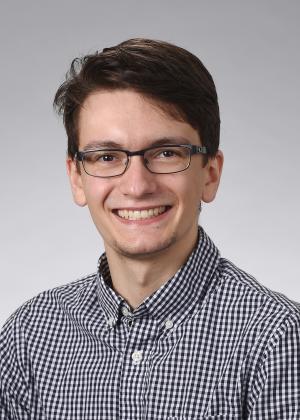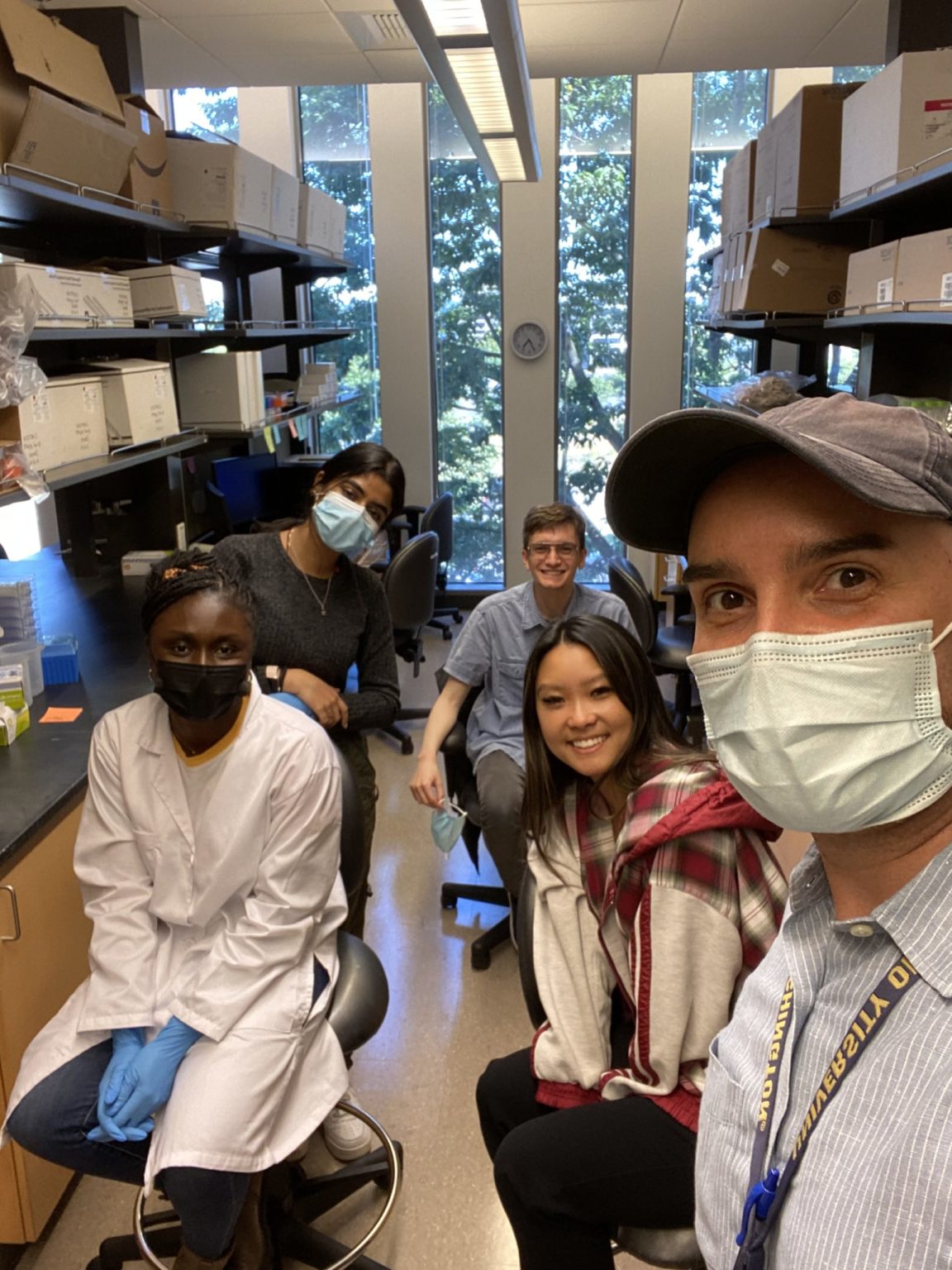Today’s Scholarly Spotlight is also a news story.
The news: Christopher “CJ” Johnson, an MS2 in Montana, has won the Physician-Scientist Support Foundation (PSSF) Medical Scholars Research Fellowship (MSRF) award for 2023-2024. Johnson is one of only five students in the nation selected to receive a one-year fellowship award that will support him for a full year of laboratory research starting in Summer 2023.
The opportunity: The fellowship will allow Johnson to continue his research with the Simpson Lab, led by Cory Simpson, MD, PhD, Principal Investigator and Assistant Professor in the UW Division of Dermatology. You can see members of the lab in the photo above.

Johnson and the Simpson Lab study the cellular processes that create and maintain skin.
Johnson’s background: Before medical school, Johnson had worked as a research scientist at the Center for Translational Medicine at the University of Montana in Missoula [CLS1] prior to starting medical school.
“I attribute my curiosity for basic science and foundational research skills to CTM,” Johnson said. “This experience is where I discovered that I wanted to incorporate basic science research into my career as a physician. After leaving CTM I was unsure what area of research I wanted to explore.”
Discovering derm: “My interest in dermatology-based research was sparked during my 1st year of medical school after learning about rare dermatological diseases that lack treatments such as epidermolysis bullosa,” Johnson said. “I was thrilled to be accepted into Dr. Simpson’s lab which focuses on mapping out mechanisms governing skin development and pathophysiology for my summer Independent Investigative Inquiry (III) in Seattle.”
The research: Here’s how Dr. Simpson explained the future research and what’s at stake: “Unfortunately, there are no FDA-approved therapies for my patients with genetic blistering diseases, who suffer from chronic wounds and infections. This results from a poor understanding of the basic mechanisms that drive the continual regeneration of the epidermal barrier.”
“During his 3-month summer rotation, Christopher generated viral vectors encoding fluorescent proteins that allowed us to visualize single organelle dynamics in live cells. His work helped uncover novel mechanisms that drive the maturation of human epidermal cells called keratinocytes.”
“The project proposed by Christopher for the coming year will address a gap in knowledge by elucidating the function of the endoplasmic reticulum (ER) in regulating epidermal barrier formation; the experiments build upon his prior summer work, leveraging CRISPR-based gene editing, organoid human epidermis, and live confocal microscopy tools.”
The eventual goal, of course, is to understand skin cells well enough to develop treatments for rare skin diseases that compromise the epidermal barrier.
Johnson’s place in the lab: Says Dr. Simpson, “Other members of my lab have commented on how his positive attitude and infectious enthusiasm for science have made our lab a better place to work. He was graciously receptive to feedback and always aimed to improve. I appreciated that he took time to share his experience with our undergraduates, gladly stepping up to teach them a lab technique or offering helpful advice as they explored the process of applying to medical school. Christopher was always willing to jump in and help others.”
Johnson’s reaction: “I believe I was awarded the Fellowship by effectively conveying to the PSSF committee how my research journey led me to pursue becoming a physician scientist.”
“I feel very honored to be chosen for this fellowship. After leaving the Simpson lab this summer I knew I wanted to continue on this project and continue my growth in basic science research. Receiving this support feels surreal, and I’m ecstatic to be a part of the Medical Student Research Fellowship’s inaugural class.”
Here’s another view of lab members, taken at a different time: from left, Afua Tiwaa, research scientist, Reeteka Kudallur, UW undergrad lab assistant), Johnson, Whitney Tran, UW undergrad lab assistant, and then Dr. Simpson holding the camera.


